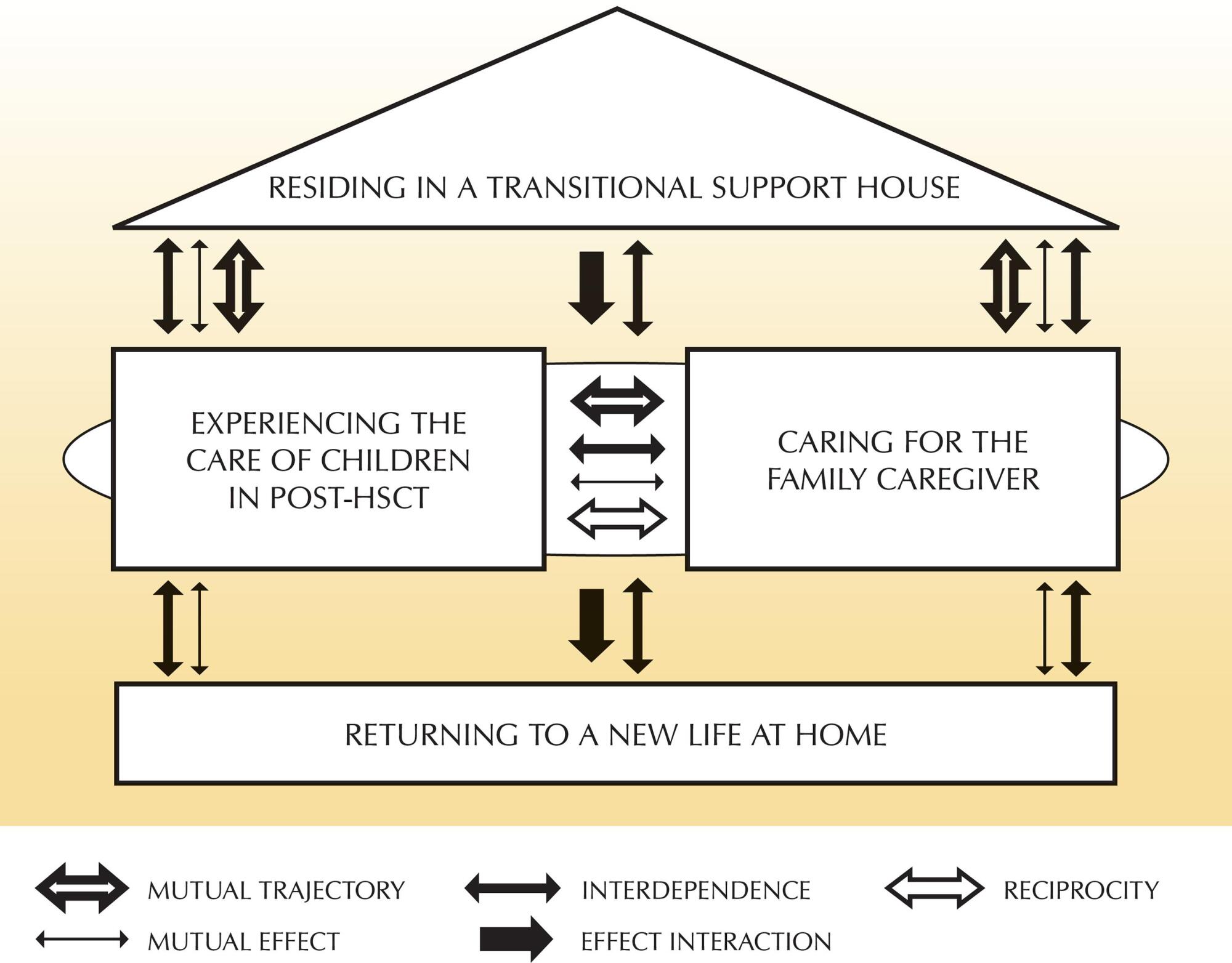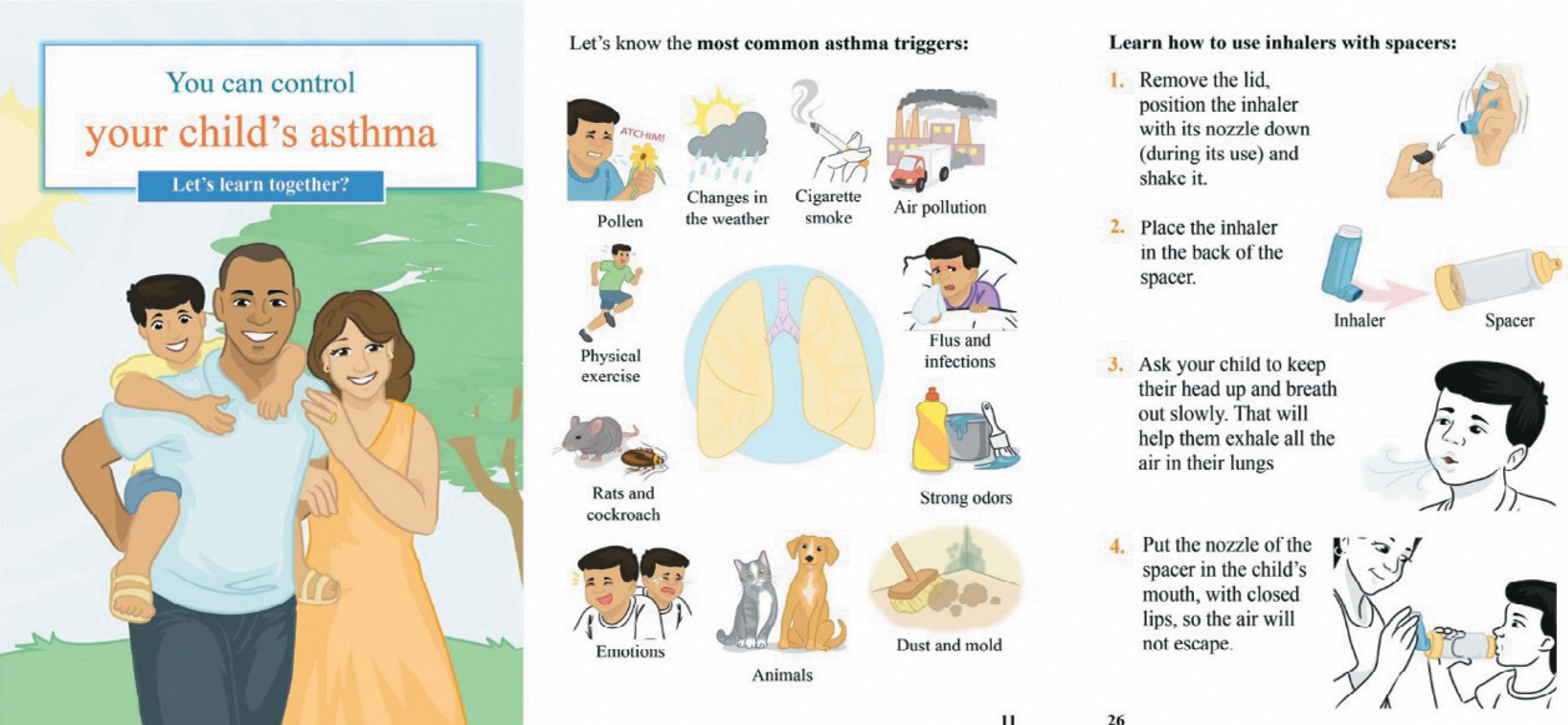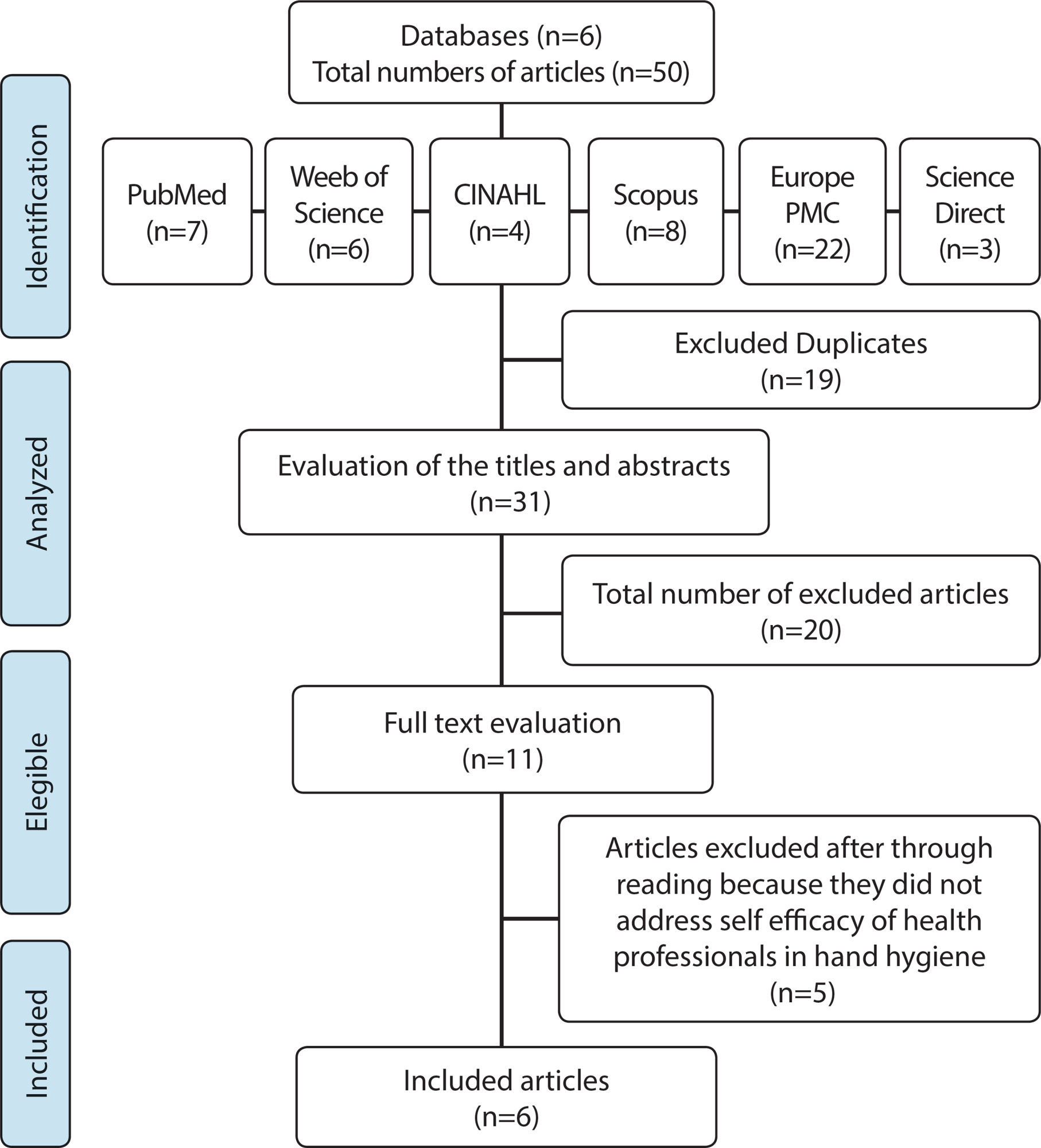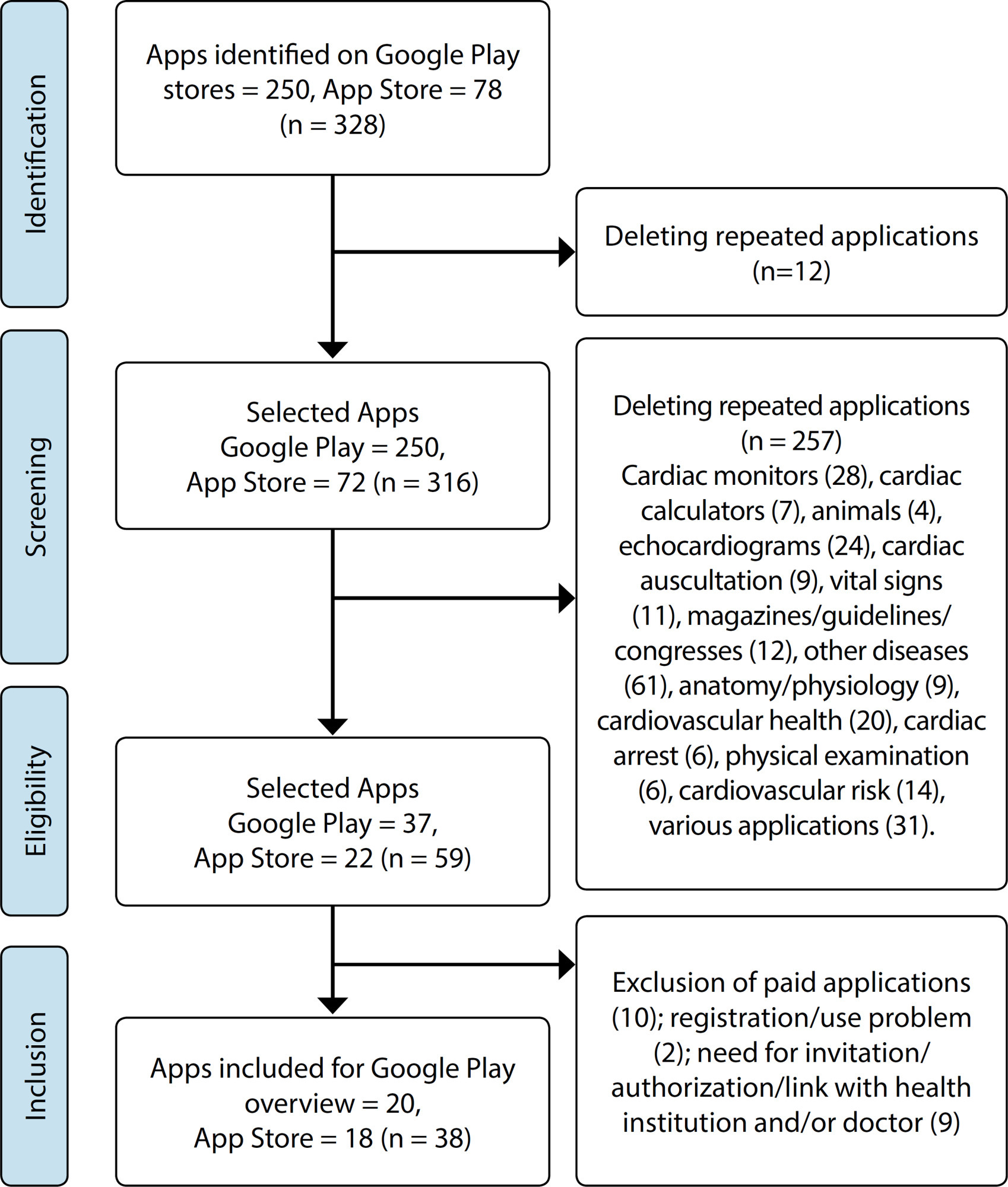-
01-01-2016
The experience of grandmothers of children with cancer
Revista Brasileira de Enfermagem. 2016;69(3):559-565
Abstract
The experience of grandmothers of children with cancer
Revista Brasileira de Enfermagem. 2016;69(3):559-565
DOI 10.1590/0034-7167.2016690320i
Views0See moreABSTRACT
Objective:
to understand, from grandmothers’ perspectives, the experience of having a grandchild with cancer.
Method:
qualitative study, guided by philosophical hermeneutics. Eight grandmothers of children who had finished an oncology treatment participated in this study. Data were collected through interviews, which were recorded, transcribed, and analyzed according to the principles of hermeneutics.
Results:
the grandmothers underwent an experience of multiplied, silent, transformative, and permanent suffering. They believe it is their role to be present, but they recognize their adult children’s independence and self-determination. Grandmothers highlighted that their experience has been very little accessed and considered by health care professionals.
Conclusion:
we recommend including grandparents in the context of care and in additional research.
-
01-01-2016
Knowledge of healthcare professionals on the evaluation and treatment of neonatal pain
Revista Brasileira de Enfermagem. 2016;69(3):552-558
Abstract
Knowledge of healthcare professionals on the evaluation and treatment of neonatal pain
Revista Brasileira de Enfermagem. 2016;69(3):552-558
DOI 10.1590/0034-7167.2016690319i
Views0See moreABSTRACT
Objective:
to identify knowledge of healthcare professionals on the management, evaluation and treatment of pain in a neonatal unit in a municipality of Rio de Janeiro.
Method:
descriptive, exploratory study with quantitative analysis. Data were analyzed using the software R. Core Team
Results:
of the 96 healthcare professionals who participated in the study, 42 nursing aides/technicians responded, along with 22 nurses, 20 physicians and 2 physical therapists. The results showed that 40.5% of the nursing aides/technicians, 50% of the physicians and 50% of the physical therapists confirmed that they coordinate/perform/assist in the care of babies’ pain while performing procedures (lumbar puncture, chest tube insertion and central line). There was a significant difference of agreement in relation to the nursing aides/technicians and physicians. Most (69.8%) of the healthcare professionals knew of some non-pharmacological measure effective for relief of acute pain.
Conclusion:
there is a need for an educational intervention program, with participation of those involved, in the process to change professional practice.
-
01-01-2016
Moments for hand hygiene in Material and Sterilization Center
Revista Brasileira de Enfermagem. 2016;69(3):546-551
Abstract
Moments for hand hygiene in Material and Sterilization Center
Revista Brasileira de Enfermagem. 2016;69(3):546-551
DOI 10.1590/0034-7167.2016690318i
Views0See moreABSTRACT
Objective:
to characterize the moments when there is a need for hand hygiene (HH) by employees who work in Material and Sterilization Center (MSC).
Method:
we conducted a descriptive cross-sectional study in the MSC of a large hospital, from July to November 2012, in Goiânia, state of Goiás, Brazil. Data obtained through observation of workers, following a previously evaluated and tested checklist.
Results:
to the dirty area, standardized moments of HH were enough. In the clean area, “Extra moments with indication” for HH, resulting from the work process, such as: after disinfecting benches, after verification and inventory of consigned products, before assembling boxes/trays, before loading and unloading the autoclave, before handling and distributing health care products, among others, were necessary.
Conclusion:
the moments of HH in the dirty area coincide with indications of the clinical practice; and, in the clean area, characteristic moments of the work process were captured.
-
01-01-2016
The experience of family care in transitional support houses
Revista Brasileira de Enfermagem. 2016;69(3):538-545
Abstract
The experience of family care in transitional support houses
Revista Brasileira de Enfermagem. 2016;69(3):538-545
DOI 10.1590/0034-7167.2016690317i
Views0See moreABSTRACT
Objective:
to present the theoretical model that represents the experience of care in transitional homes of support to families of children in a period of post-transplantation of hematopoietic stem cells.
Method:
grounded theory, performed with 18 participants from three different samples. For analysis, we used the QSR Nvivo10 software.
Results:
we elaborated four categories: living in the transitional support home; experiencing care of children in post-transplantation of hematopoietic stem cells; taking care of the family caregiver; and returning to a new life at home, which interrelate according to the theoretical code of the interactive family.
Conclusion:
this research contributes to understanding the experience of care in transitional support homes of families with children in post-transplantation of hematopoietic stem cells and subsidizes nursing and health actions provided to this population; it also contributes to the development of a hospital discharge guidance and care directed to this clientele.

-
01-01-2016
Social representations of nurses on tuberculosis
Revista Brasileira de Enfermagem. 2016;69(3):532-537
Abstract
Social representations of nurses on tuberculosis
Revista Brasileira de Enfermagem. 2016;69(3):532-537
DOI 10.1590/0034-7167.2016690316i
Views0See moreABSTRACT
Objective:
to describe the social representation of nurses on tuberculosis and identify the implications on nursing care.
Method:
qualitative research with the participation of 52 nurses from 23 Basic Health Units of Belém, Pará. A semi-structured interview was conducted with subsequent analysis of the thematic content according to the Theory of Social Representations.
Results:
the social representations of tuberculosis were organized into two categories: infection, evidencing the clinical-epidemiological aspects of the disease, and stigma and prejudice, representing the social aspect. Care is affected by fear – a fact that explains the distance adopted by some nurses when handling ill people.
Conclusion:
the social representations of nurses on tuberculosis remain grounded in fear, leading professionals to keep a certain distance from patients and generating stigma and prejudice, which may affect adherence to treatment.
-
01-01-2016
Health care for children and adolescents with HIV: a comparison of services
Revista Brasileira de Enfermagem. 2016;69(3):522-531
Abstract
Health care for children and adolescents with HIV: a comparison of services
Revista Brasileira de Enfermagem. 2016;69(3):522-531
DOI 10.1590/0034-7167.2016690315i
Views0See moreABSTRACT
Objective:
compare the quality of different types of health care for children and adolescents with HIV, in the experience of family members and caregivers.
Method:
a cross-sectional study was conducted with 71 family members and caregivers, using the children’s version of the Primary Care Assessment Tool (PCATool-Brazil). The Mann-Whitney or Student’s t-test and Pearson’s chi-square or Fisher’s exact test were used for the analysis.
Results:
primary care services and, predominantly, specialized HIV services, were identified as the regular health care sources. There were no significant differences in quality, since their scores were close to the ideal level.
Conclusion:
the attributes of these services need to be improved, which would entail reformulating their structural and performance aspects. In addition, it is imperative to recognize primary health care as an integral place for promoting the health of children and adolescents with HIV.
-
01-01-2016
Nursing care in Specialized HIV/Aids Outpatient Services
Revista Brasileira de Enfermagem. 2016;69(3):515-521
Abstract
Nursing care in Specialized HIV/Aids Outpatient Services
Revista Brasileira de Enfermagem. 2016;69(3):515-521
DOI 10.1590/0034-7167.2016690314i
Views1See moreABSTRACT
Objective:
to analyze the discourses about the care provided by nurses operating in Specialized HIV/Aids Outpatient Services in four public institutions of the city of Fortaleza, Ceará, Brazil.
Method:
descriptive and exploratory study with a qualitative approach, which used as a method the discourse analysis.
Results:
when titling the “care as negative”, such title came from the analogy proposed by Freud (1912) with the photographic negative, represented by what that care can configure from the unconscious movement, since nurses did not perceive themselves in the care actions developed by supporting the work of other occupational categories, contributing to maintain the ideology of biomedicine.
Conclusion:
it is necessary to justify and theorize a nursing clinical practice from epistemological issues of the profession, in such a way that nurses can understand their relevance within the care provided.
-
01-01-2016
Notification of health problems among nursing workers in university hospitals
Revista Brasileira de Enfermagem. 2016;69(3):507-514
Abstract
Notification of health problems among nursing workers in university hospitals
Revista Brasileira de Enfermagem. 2016;69(3):507-514
DOI 10.1590/0034-7167.2016690313i
Views0See moreABSTRACT
Objective:
to identify the health problems of nursing workers and describe their consequences.
Method:
an epidemiological, descriptive study with a quantitative approach. The survey was conducted through the Health Monitoring System for Nursing Workers (SIMOSTE) in three university hospitals in São Paulo within a 12-month period.
Results:
a total of 970 records related to health problems were identified; most of these were related to sick leave, occupational accidents with leave, absences, and occupational accidents without leave, with a predominance of musculoskeletal and respiratory system diseases, infectious and parasitic diseases, and nervous system diseases, among others. A total of 4,161 days of work were lost because of the mentioned health problems.
Conclusion:
the results evidence the need to propose preventive strategies to mitigate and reduce health problems in nursing workers.
-
REFLECTION02-22-2021
Convergent care research and its qualification as scientific research
Revista Brasileira de Enfermagem. 2021;74(1):e20190657
Abstract
REFLECTIONConvergent care research and its qualification as scientific research
Revista Brasileira de Enfermagem. 2021;74(1):e20190657
DOI 10.1590/0034-7167-2019-0657
Views0See moreABSTRACT
Objectives:
to highlight the main attributes of Convergent Care Research that ratify it as a method of scientific research. Methods: it is a theoretical-reflective study on Convergent Care Research’s theoretical-methodological assumptions. Development: Convergent Care Research is compatible with the Social Constructionism paradigm. Convergent Care Research projects have two approaches: practical and conceptual. The Convergent Care Research process corpus contains five phases: conception; instrumentation; scrutiny; analysis and theorizing. Final Considerations: Convergent Care Research rigor encompasses the relationship between research and care practice, and this corresponds to the convergence of these two dimensions. Due to its theoretical foundation and criteria of methodological rigor, Convergent Care Research is aligned with scientific research methods.
-
07-05-2021
Factors associated with urinary tract infection in a Nursing Home
Revista Brasileira de Enfermagem. 2021;74:e20200813
Abstract
Factors associated with urinary tract infection in a Nursing Home
Revista Brasileira de Enfermagem. 2021;74:e20200813
DOI 10.1590/0034-7167-2020-0813
Views1See moreABSTRACT
Objective:
to analyze the factors associated with urinary tract infection occurrence in institutionalized elderly.
Methods:
this is a cross-sectional, analytical, quantitative study with 116 elderly people from a Nursing Home. Urinary tract infection diagnosis was carried out through urine culture and clinical assessment. Demographic data and associated factors were obtained from medical records. Statistical analysis included bivariate analysis and logistic regression models.
Results:
the factors associated with urinary tract infection (p<0.05) were being female; wheelchair user; diaper use; diuretic use; urinary and bowel incontinence; type 1 diabetes; benign prostatic hyperplasia; dehydration.
Conclusion:
this study revealed that it is important to consider non-modifiable factors such as sex and clinical comorbidities; however, dehydration, a modifiable factor, increased the chances of developing urinary tract infections by 40 times among institutionalized elderly and demands greater attention from the health team.
-
ORIGINAL ARTICLE05-24-2021
Content validation of an educational booklet for asthma control and management in children
Revista Brasileira de Enfermagem. 2021;74:e20200353
Abstract
ORIGINAL ARTICLEContent validation of an educational booklet for asthma control and management in children
Revista Brasileira de Enfermagem. 2021;74:e20200353
DOI 10.1590/0034-7167-2020-0353
Views0See moreABSTRACT
Objective:
to validate the content and appearance of the educational booklet “You can control your child’s asthma – let’s learn together?” with parents and caregivers of children with asthma.
Methods:
this is a methodological study, carried out with 34 mothers and caregivers of children, from two to 10 years old, diagnosed with asthma. The educational booklet validation was performed using Content Validity Index (CVI) and assessment of comprehension, attractiveness, self-efficacy, persuasion, and cultural acceptance domains.
Results:
the booklet was considered clear (99.8%) and relevant (100%), with a global CVI of 0.99. Domain assessment proved to be an easy-to-understand tool, culturally appropriate, attractive, with persuasive power and promoting self-efficacy.
Conclusion:
the booklet is valid and adequate for promoting the self-efficacy of parents and caregivers in childhood asthma control and management, potentially scalable to other realities of outpatient care.

-
REVIEW10-05-2020
Self-efficacy of health professionals in hand hygiene practice: is it possible to measure?
Revista Brasileira de Enfermagem. 2020;73:e20190873
Abstract
REVIEWSelf-efficacy of health professionals in hand hygiene practice: is it possible to measure?
Revista Brasileira de Enfermagem. 2020;73:e20190873
DOI 10.1590/0034-7167-2019-0873
Views0See moreABSTRACT
Objective:
To identify in the literature the tools used to measure self-efficacy of health professionals in hand hygiene.
Methods:
Integrative literature review carried out by consulting the databases PubMed, Scopus, Web of Science, Cumulative Index to Nursing and Allied Health Literature, Europe PubMed Central, and Science Direct using the descriptors Self Efficacy, Hand Hygiene, and Health Personnel.
Results:
Six articles, all of which with observational design, were selected. It was possible to infer that four studies used validated instruments to measure self-efficacy of health professionals in the conformity with the recommendations for hand hygiene. The other studies used questionnaires that were not validated.
Final considerations:
Despite the extensive literature on hand hygiene, there is a lack of scientific evidence regarding the use of validated instruments to measure self-efficacy of health professionals in the procedure. The use of properly validated psychometric instruments is useful to guarantee the quality of results in studies.

-
ORIGINAL ARTICLE07-01-2020
Obstetric analgesia in labor and its association with neonatal outcomes
Revista Brasileira de Enfermagem. 2020;73(5):e20180757
Abstract
ORIGINAL ARTICLEObstetric analgesia in labor and its association with neonatal outcomes
Revista Brasileira de Enfermagem. 2020;73(5):e20180757
DOI 10.1590/0034-7167-2018-0757
Views0See moreABSTRACT
Objetive:
To investigate the association between analgesia during labor and occurrence of neonatal outcomes.
Method:
Retrospective cohort study with medical records of 850 parturient. The exposure variable of interest was receiving pharmacological analgesia during labor and neonatal outcomes were: one- and five-minute Apgar, resuscitation maneuvers and referral of the newborn to Neonatal ICU. A logistic regression was carried out to obtain Odds Ratios and 95% confidence interval, with adjustment for confounding factors.
Results:
Among the women studied, 35% received analgesia and this use was associated with a greater chance of neonatal outcomes such as one-minute Apgar < 7 (p <0.0001), resuscitation maneuvers (p <0.001) and referral to the Neonatal ICU (p = 0.004), mostly were among low-risk pregnant women, even after adjustments.
Conclusion:
The use of pharmacological analgesia during labor is associated with one-minute Apgar < 7, resuscitation maneuvers and referral to the Neonatal ICU.
-
10-01-2022
Benchmarking of mobile apps on heart failure
Revista Brasileira de Enfermagem. 2022;75(1):e20201093
Abstract
Benchmarking of mobile apps on heart failure
Revista Brasileira de Enfermagem. 2022;75(1):e20201093
DOI 10.1590/0034-7167-2020-1093
Views0INTRODUCTIONHeart failure (HF) is an emerging global threat, with a current prevalence of 64.34 million cases on the planet (8.52 per 1,000 inhabitants), representing 9.91 million years lost due to disability and spending of US$346.17 billion(), with a prospect of an increase despite therapeutic advances. These data alert to the prioritization of preventive actions and […]See more
-
ORIGINAL ARTICLE07-08-2020
Nurses’ practice in quilombola communities: an interface between cultural and political competence
Revista Brasileira de Enfermagem. 2020;73(5):e20190433
Abstract
ORIGINAL ARTICLENurses’ practice in quilombola communities: an interface between cultural and political competence
Revista Brasileira de Enfermagem. 2020;73(5):e20190433
DOI 10.1590/0034-7167-2019-0433
Views1See moreABSTRACT
Objectives:
to understand Family Health Strategy nurses’ practices in the context of quilombola communities with an interface for cultural and political competences.
Methods:
a single integrated, qualitative case study carried out on seven Family Health Strategies located in the Metropolitan Region of Belo Horizonte, state of Minas Gerais. Seven nurses and 59 quilombolas participated. Data were collected through individual interviews with nurses, collective interviews with quilombolas and observation. For analysis, the thematic content analysis was adopted.
Results:
the results revealed structural and territorial problems, which are configured as barriers for professional-user encounter as well as for professional practice performance.
Final Considerations:
it is necessary that Family Health Strategy nurses, based on political and cultural competences, create strategies that minimize the difficulties found in the implementation of health actions directed to quilombolas. Such strategies anchored in inclusive public policies.
-
ORIGINAL ARTICLE08-19-2019
Health promotion by nursing technicians from the nurses’ perspective
Revista Brasileira de Enfermagem. 2019;72(4):979-987
Abstract
ORIGINAL ARTICLEHealth promotion by nursing technicians from the nurses’ perspective
Revista Brasileira de Enfermagem. 2019;72(4):979-987
DOI 10.1590/0034-7167-2018-0552
Views0See moreABSTRACT
Objective:
to analyze education and practice of nursing technicians in health promotion, from the perspective of teaching nurses of technical course and Primary Health Care nurses.
Method:
an exploratory study with qualitative data analysis, carried out in the city of São Paulo, through semi-structured interviews with nine public technical professors and 16 nurses from the basic health network. Data thematic analysis was carried out.
Results:
three thematic categories have emerged: Conceptions and experiences on health promotion; Nursing technician’s practice in health promotion; and Nursing technician education on health promotion.
Final considerations:
it is necessary to review the centrality given to technicalism in the education and practice of nursing technicians, contemplating the health promotion and seeking the development of professional competence for the construction of transformative practices aimed at valuing the autonomy and proactivity of the people in health and quality of life production.
Search
Search in:
Nuvem de Tags
Adolescente (85) Atenção Primária à Saúde (239) COVID-19 (91) Criança (91) Cuidados de Enfermagem (269) Educação em Enfermagem (151) Educação em Saúde (139) Enfermagem (930) Enfermagem Pediátrica (86) Estudantes de Enfermagem (77) Estudos de Validação (131) Família (87) Idoso (208) Promoção da Saúde (99) Qualidade de Vida (104) Saúde do Trabalhador (86) Saúde Mental (145) Saúde Pública (82) Segurança do Paciente (150) Tecnologia Educacional (100)



